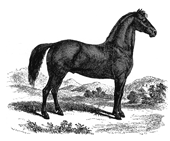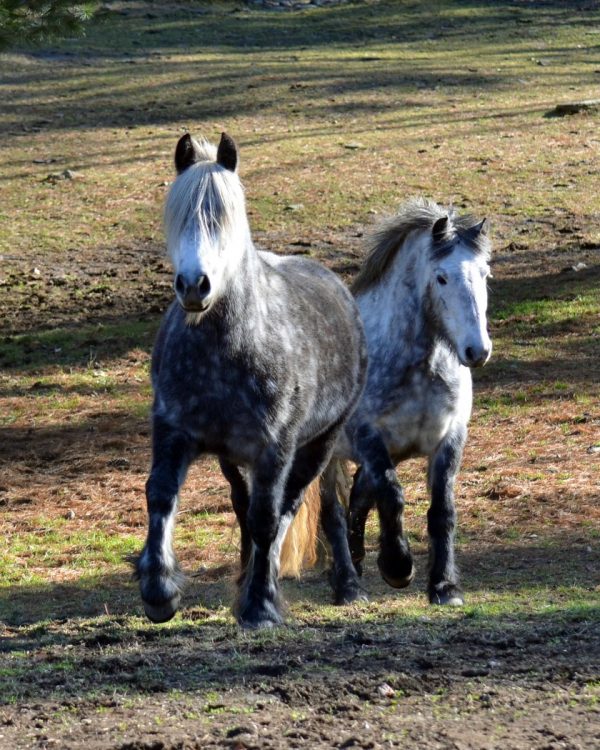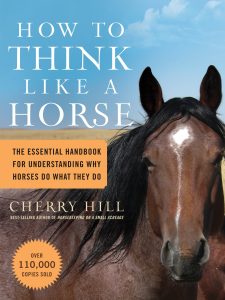
Breed Facts
Status:
Critical
Use:
Riding, Driving
Adult Weight:
800-1000 lbs
Adult Height:
Up to 14.2 hands
Temperament:
Docile, Spirited
Experience Level:
Novice-Intermediate
Notes:
Small draft-type pony; intelligent; courageous; good stamina; feathered feet; great action in movement
DALES PONY
The Dales Pony is the largest of five pony breeds native to England, the others being the Dartmoor, Exmoor, Fell, and New Forest. These breeds descend from the ancient Celtic horses of northern Europe that had migrated to the British Isles. Remains of horses dating to the period of the Roman occupation were unearthed in the Ribchester area of the Dales in 2009.
The Dales originated in the uplands of northern England where they were used as pack animals for the lead-mining industry on the eastern slopes of the Pennines. (Their close cousin, the Fell pony, was used on the western slopes.) The early ancestry of the Dales is obscure. Its lineage is thought to include the now extinct Scottish Galloway pony and native Pennine pony, and Friesian stocks imported from the Netherlands by the Romans during the 2nd century CE.
Up until the 1800s, these hardy ponies carried loads of lead ore down to the coast from the mines. Then, they returned carrying coal, traveling 200 miles per week over rocky, rugged terrain. As the railroad became the main method of transport for the mining industry, the pony found work on hilly farms, serving as a small draft, carriage, and riding animal. During this time the Dales Pony was bred to the Clydesdale horse to increase the pony’s size, and as carriage driving became popular, (now extinct) Norfolk Trotter and Yorkshire Roadster were introduced to add flashy knee and hock action.
During the World Wars, the Dales Pony was drafted into the British military to carry armaments. While this was a good job, it was a dangerous one. Many Dales were killed in the wars. Most of those that survived were left behind on the European mainland. Following WWII, mechanization replaced most draft animals, and many surviving Dales became food for hungry post-war Europeans. By 1955, only four fillies were registered with the breed association and breed enthusiasts recognized the crisis. Concerted conservation efforts included locating unregistered stock.
Three Fell Pony stallions were used in the 1960s to help resurrect the breed. By 1971, the breed had been rescued from extinction, and in 1991, twelve ponies were imported to Canada. By 1994, three fillies and one colt were imported to the United States. According to the Canadian Mountain and Moorland Society, the North American breed association for the Dales pony, in 1999 approximately 60 ponies were listed in the North American studbook, with the global population estimated at 800.
Today the Dales Pony is valued for its stamina and shows potential as an endurance or trekking mount. They are used in combined driving events, as well as under saddle, and can easily carry an adult rider. The Dales Pony may stand up to 14.2 hands (58”) at the withers, slightly larger than the Fell. They should have a straight or slightly convex profile, with any dishing considered a fault.
They have a strong, compact build, dense, flat bones, and 8 to 9-inch cannon bones with feathered fetlocks, and a flowing mane and tail. They are known for their hard, large feet, and strong legs. The Dales coat color is predominantly black or dark brown, but some animals are gray, bay, and, rarely, roan. Acceptable white markings are limited to a star, snip, and/or white fetlocks on the hind legs. They are known for their distinctive trot. In addition to having tremendous stamina, the Dales is valued for its courage, intelligence, thriftiness, and calm temperament.
The Dales pony breed may be hard to find because of its rarity.
Did you know:
History shapes breed identity and purpose. It also helps inform heritage breed conservation. The Livestock Conservancy documents these histories for each livestock and poultry breed we work with. Love History? Join today at Membership & Subscribers – The Livestock Conservancy for as little as $4 monthly.

Breed Facts
Status:
Critical
Use:
Riding, Driving
Adult Weight:
800-1000 lbs
Temperament:
Docile, Spirited
Experience Level:
Novice – Intermediate
Notes:
Small draft horse, intelligent, courageous, good stamina, feathered feet, great action in movement
You may be interested in…
Managing Breeds for a Secure Future
By Dr. Phil Sponenberg, Dr. Alison Martin, Jeannette Beranger
$34.95
Manual of Methods for Preservation of Valuable Equine Genetics
By Kindra Rader, Charles C. Love, Charlene R. Couch and Katrin Hinrichs
$19.95






